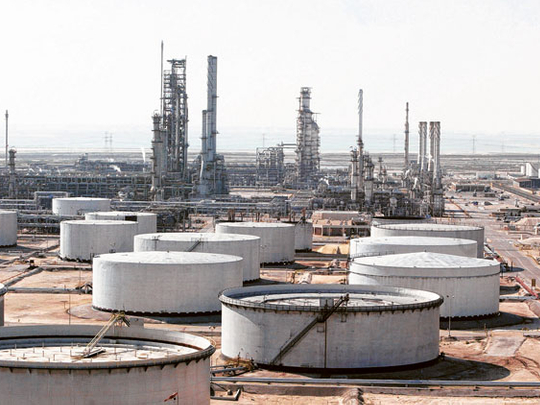
Dubai: Saudi Arabia's economy is set to emerge as the second fastest growing economy in the Gulf region, thanks to huge public spending and the strong recovery in oil prices.
Economists are projecting Saudi Arabia's gross domestic product to grow four to 4.5 per cent next year.
"Saudi Arabia's economic growth is likely to accelerate to 4.5 per cent in 2011 on higher crude oil output and pricing and also on steady fiscal spending," said Mohamad Hawa, an analyst with Credit Suisse.
The Saudi government's strong public spending has helped in the recovery of the non-oil sector of the economy with its key industrial and infrastructure projects likely helping to bolster non-oil economic activity.
Credit Suisse's economics team estimates government spending will increase 10.4 per cent year on year in 2011 and 10.7 per cent year-on-year in 2012, which is around 37 per cent and 36.9 per cent of GDP for 2011 and 2012, respectively.
Moreover, the share of capital expenditure has increased from 18 per cent of spending in 2005 to 30.2 per cent in 2009.
Saudi Arabia's economic growth last year accelerated to an estimated 3.8 per cent from 0.6 per cent in 2009, official statistics said.
Oil sector growth
The oil sector, which still accounts for about half of Saudi Arabia's economy, grew by an estimated 2.1 per cent as the global economic recovery gathered momentum. However, non-oil growth was stronger — at above five per cent — than what most analysts had anticipated.
In 2010 government spending on infrastructure projects underpinned Saudi Arabia's GDP growth, with total expenditure rising to a record 626.5 billion riyals (Dh613.5 billion), up five per cent on 2009.
The impact of government spending is reflected in the official GDP estimates for last year, which show that the government sector expanded by almost six per cent year-on-year in 2010. Despite the 16 per cent excessive spending over the 2010 budget, significantly higher-than-budgeted oil prices allowed the kingdom to post a budget surplus of 6.7 per cent of GDP or 108.5 billion riyals.
Economists are optimistic about stronger growth in the kingdom this year.
"We expect Saudi GDP growth to accelerate to 4.4 per cent this year, underpinned by government spending, recovering private sector activity, and a modest expansion of two per cent year-on-year in the oil sector," said Khatija Haque, an economist with Dubai-based financial services firm Shuaa Capital.
While most economists agree that Saudi Arabia's economic growth in 2011 will be driven by the country's massive capital investments in key strategic sectors and infrastructure, no one disputes the fact is that hydrocarbons are the biggest driver of the Saudi economy, at 27 per cent of GDP, followed by government services (18 per cent), manufacturing (12 per cent), financial services (11 per cent) and construction (seven per cent).
In 2010, the Saudi government announced a $385 billion (Dh1.4 trillion) spending programme for the 2010-14 period, largely allocated to infrastructure and social services. Most economists expect the Organisation of Petroleum Exporting Countries (Opec) to continue to cap hydrocarbon production in 2011. As a result, the two key growth drivers will be diversification related spending (mainly infrastructure) and development spending in the hydrocarbon sector, both downstream and upstream.
"We believe the move towards infrastructure-driven spending is healthier for the Saudi economy than hydrocarbon-driven growth, given the better filter-through effect of such spending to the real economy," said Shady Shaher, an economist with Standard Chartered Bank, UAE.
"Even where spending is allocated to the energy sector, it will be concentrated in the downstream sector. This is positive, as it will create jobs for Saudi nationals due to the labour intensity of the sector," he said.
Despite the strong infrastructure driven growth, analysts say the Saudi economy continues to be a low-leverage economy with estimated government debt of 11.3 per cent (to GDP) in 2011. Its private sector credit to GDP ratio is 42.7 per cent for the 2011; significantly lower that of many of its regional peers.
Economists say the overall lower leverage in both private and public sectors and relatively low loan growth is expected keep inflation under control. The country's consumer price inflation reached 5.8 per cent in November last year from four per cent in November 2009 mainly driven by an increase in food prices. Food inflation, which forms a major component (26 per cent) of the Saudi consumer price index, increased by 8.5 per cent last year due to supply-related factors and unfavourable weather conditions. House price inflation, which is the second major component of the index (18 per cent), also continues to grow but has decelerated from 11.8 per cent in 2009 to 8.9 per cent last year.










